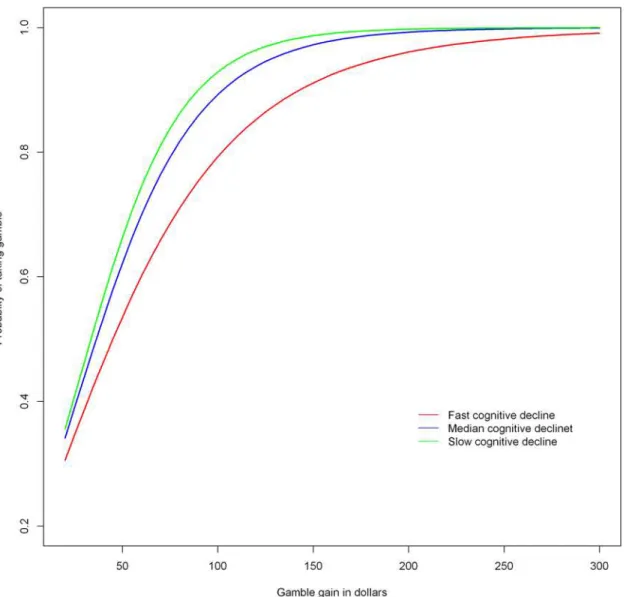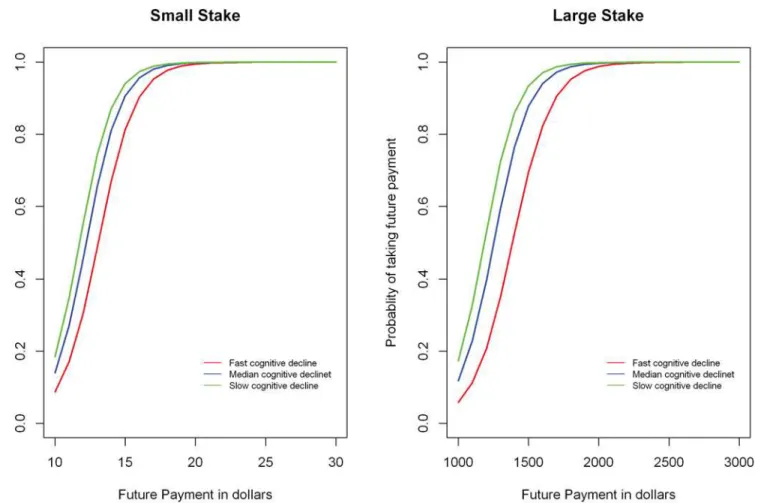Cognitive decline is associated with risk aversion and temporal discounting in older adults without dementia.
Texto
Imagem



Documentos relacionados
Por isso, este trabalho são primeiras linhas direcionadas a contribuir com as ponderações so- bre a efetividade da implementação das reservas de vagas, no Instituto Federal
Desta forma, esta revisão teve como objetivo a veri- ficação da importância das Ômicas como ferramentas para a bioprospecção em microrganismos, na qual, são
Increased activation of the masseter muscle in relation to the temporal muscle was observed in a study conducted in adults with and without normal occlusion, which are similar to
Os principais resultados encontrados foram a nenhum dos protocolos testados provocou uma HPE significativa da PAS; b uma HPE de maior magnitude e duração na PAD foi encontrada após
years) - defined by the time between the onset of symp- toms of cognitive decline and the clinical diagnosis, num- ber of doctors consulted due to cognitive decline prior to
Objective: The present study aimed to investigate the influence of VitD levels on cognitive decline in patients with dementia due to Alzheimer’s disease (AD, n = 32) and mild
A higher prevalence of cognitive decline was found in the category of older elderly (≥80 years) and for the lowest level of education, where each year of education was
6,24,25,27 The performance on the PDT of patients with Lewy body dementia was lower and dissociable from their global cognitive impairment when compared with older adults with